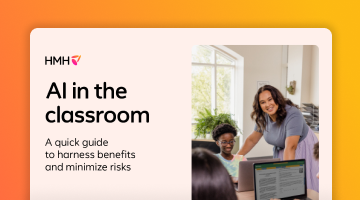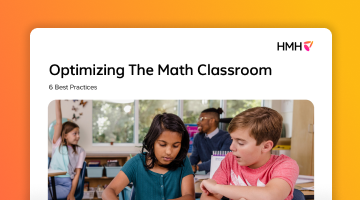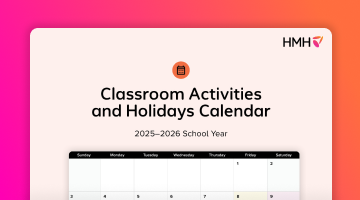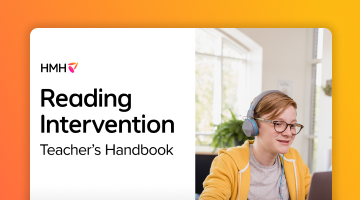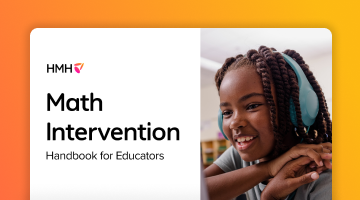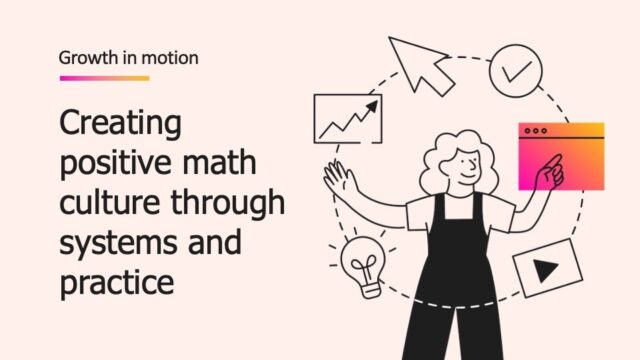
As a first-year teacher, I found myself excited yet nervous for the start of my teaching journey. I looked forward to stepping in front of my class and leading lessons but wondered how I’d navigate the ins and outs of it all. Questions raced through my mind: How much time should I spend on ice breakers? How should I transition from bell-work to a whole-group lesson? How long should an independent activity take?
Lesson planning helped me ease these concerns. I was able to map out my instructional block—even scripting out questions I’d ask. Sure, some activities did take a detour. But with my lesson plan in hand, I was able to get back on track. The following lesson planning tips and resources can help new teachers venture into planning and prepping to ensure effective and engaging teaching.
Why are lesson plans important for new teachers?
Lesson plans serve as a road map for instruction, where teachers can pinpoint standards and objectives to cover and highlight activities and projects to engage students. Having a thoughtful plan before starting a lesson is key, especially as a new teacher. Here’s how lesson plans can help new teachers.
Organize ideas and materials
A lesson plan allows teachers to outline each step of their lesson. In doing so, teachers can think of the sequence and structure of their lesson, as well as what materials will be needed throughout the lesson. This makes it easer to prep what’s needed for the days ahead.
Manage instructional time
There’s only so much time in a school day, but so many topics to teach. Having a plan can help you pace your lessons to stay on schedule. In a lesson plan, time can be allotted for instruction, activities, transitions, and assessment. Preparing for and outlining the different parts of a lesson can help you make the most of instructional time. And when you maximize opportunities for learning, students are more likely to remain engaged.
Enhance student learning
Writing a lesson plan can ensure student learning aligns to a district’s standards and curriculum. Additionally, they can help teachers address students’ individual learning needs. In a lesson plan, teachers can account for accommodations as well as extension activities to differentiate student learning.
Lesson planning tips for new teachers
Having well-crafted lessons is part of effective teaching. The following lesson planning pointers can help new teachers design detailed plans for successful instruction.
Identify learning objectives and standards
The learning objective is the central piece to any lesson plan. It is what students are expected to learn and understand by the end of the lesson. Before beginning planning, teachers should identify the learning objective as well as the standards that align to the objective. For example, a fifth-grade science teacher may want students to compare and contrast the properties of a solid, liquid, and gas. Once the objective is identified, the teacher can create a lesson that aligns to it, which can include activities and assessments based around that objective.
Collaborate with colleagues
Lesson planning can be a collaborative effort. In fact, some schools encourage teaching teams to plan together. When teachers plan together, they can give each other insight on what’s worked for them or provide feedback and suggestions on what to do differently. This can be particularly beneficial for new teachers as they find their footing in the classroom.
Use planning tools
Planning tools can be a big help to new teachers. Schools and districts may provide teachers with online planning tools to assist with lesson planning. Programs like HMH Into Reading and Into Math offer ready-made, standards-aligned lessons. HMH also provides a Lesson Plan Generator, which is an AI tool designed to help educators quickly create detailed, standards-aligned lesson plans for any subject and grade level. These lesson planning resources can give guidance on how to lesson plan and reduce the time spent on planning.
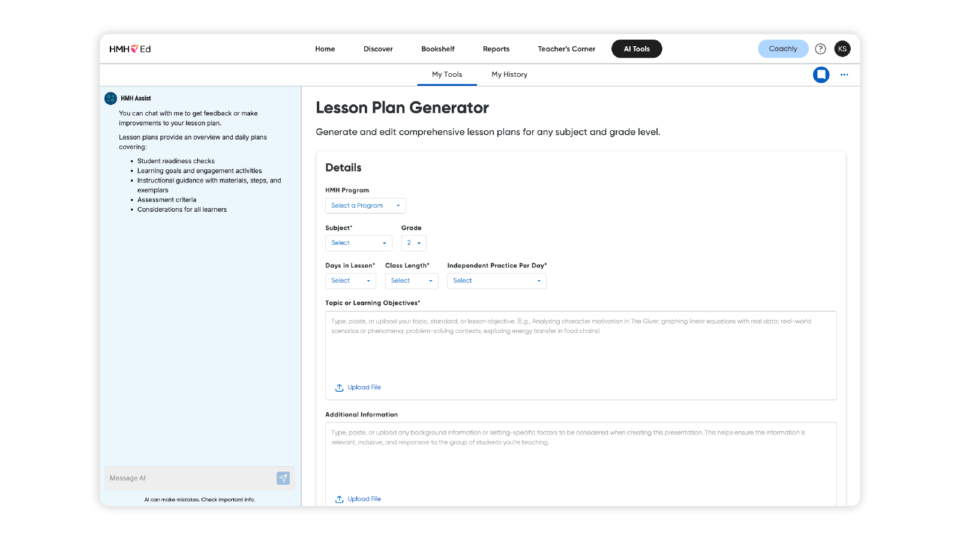
Have alternative activities ready
Sometimes a planned activity takes less time than expected. Having alternative activities can come in handy. In a lesson plan, teachers can write down additional activities to provide when students finish early or when a lesson runs short.
Assess students’ understanding
How can teachers know if students achieved the learning objective? Assessments can be a great tool to evaluate students’ understanding. Teachers can provide different types of formative assessments, like quizzes or exit tickets, to gauge what students have learned. These assessments can later inform future lessons. For example, if students couldn’t name the properties of a gas in an exit ticket, then the teacher could plan for an additional lesson on that topic.
Be flexible
Not every lesson goes as planned. New teachers should consider that there will be instances where they deviate from the intended plan. Perhaps students ask a question that sparks a discussion on a related topic. Or maybe students need additional time to better understand a topic. It’s okay to change the course of action and embrace an unexpected teachable moment or extend a lesson to the next day.
Lesson plan sample template
A lesson plan template can provide new teachers with a framework for structuring lesson plans. Below is a downloadable lesson plan template that can pair with HMH solutions. The template can be used for any content area. It includes a space in which teachers can fill out standards and skills to be covered as well as key instructional elements of the lesson.

Teaching can be unpredictable, but lesson planning can provide a sense of direction throughout the school day. With these lesson planning resources, new teachers can better stay on course to deliver effective instruction.
***
Learn about our nationally recognized professional learning community for access to ongoing coaching and on-demand resources.
Find more lesson plans and classroom resources on Shaped.
Download our FREE Substitute Teacher Activities pack

